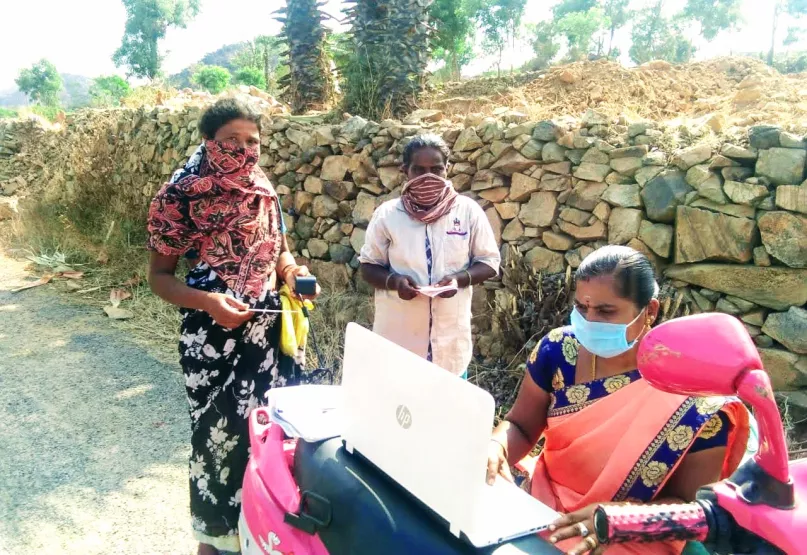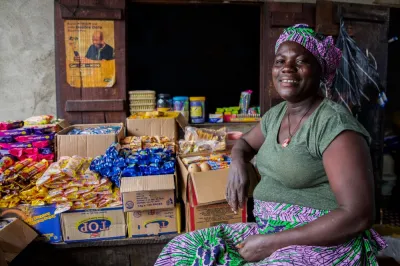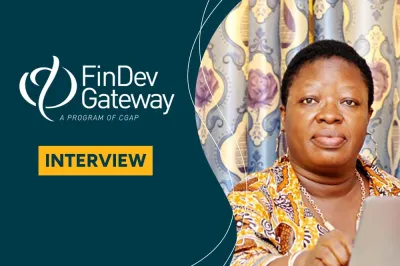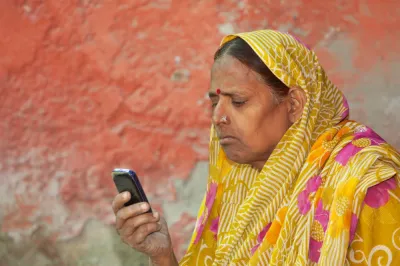Freedom on Wheels – A Ride to Economic Empowerment

Radha spends her days walking. She starts at 3am, getting her young daughters and all the family’s meals ready for the day. Then she sets out for work, where the walking really begins. Radha is a Bank Sakhi, a female banking agent who goes door to door providing basic banking services to customers who are unable to get to a bank branch. Bank Mitras (the gender-neutral term for banking agent, translated as “Bank Friend”) and Bank Sakhis (“Bank Female Friend”) form the trusted agent network that provides a lifeline for rural banking.
Radha’s work involves walking 15 kms back and forth between five connecting villages in northeast India to serve her over 250 customers, who are mostly women and elderly people with limited mobility. On a single day she interacts with at least 30 customers and is always thrilled when she sees one of her customers waiting for her. It gives her a sense of importance that she says is unparalleled and helps keep her energy up so that she doesn’t get tired from all the walking.
But a motorcycle could make things a lot easier… and help advance financial inclusion
While the bank transactions Radha helps her customers complete take only about 15 to 20 minutes per person, reaching her customers can sometimes take over two hours by foot through hilly and swampy terrain. Most days, she doesn’t get home to her daughters until around 7pm. A motorcycle could help Radha cut the time spent in the field by half.
The COVID-19 pandemic has also brought to light the importance of efficient travel options for women agents. When the public transport system shut down during the pandemic, there was an unprecedented decrease in the number of active women agents. Many Bank Sakhis were forced to stop work as they had no other way to get to their clients. Banking agents who had access to motorcycles, however, were able to continue their work without disruption.
Supporting Bank Sakhis’ ability to work is important for advancing financial inclusion, as they facilitate essential banking services to unserved and underserved regions in India. They help connect people in remote areas where ATMs and bank branches are out of reach. These services are a boon in rural India, especially for homemakers, the elderly and the disabled. Ensuring transport options such as access to motorcycles for Bank Sakhis should therefore be a priority.
Overcoming the obstacles to getting motorcycles
But to purchase a motorcycle, most Bank Sakhis like Radha would need to take out a loan, and motorcycle loans are hard to come by in India. Most major banks do not offer them, and banks that do offer this product often have strict eligibility criteria such as requiring a guarantor, which many Bank Sakhis do not have, and proof of a fixed income for at least three consecutive years, which most women cannot produce.
In a survey of FIA’s Bank Sakhi network, we found that 13 percent had requested assistance with motorcycle loans, an all-time high for such requests. However, less than 2 percent of them have received motorcycle loans. Many complained that their requests were still pending or had been denied.
To make motorcycles more accessible for Bank Sakhis, we recommend that the government partner with banks to craft customized vehicle loan policies for this segment. Projects like NRLM (National Rural Livelihood Mission) and NABARD (National Bank for Agriculture and Rural Development) can play an important role by offering soft loans to Bank Sakhis at nominal interest rates. Using SHG bank linkages the banks can ensure timely loan payments. Disbursing money to the motorcycle vendors directly will ensure the proper use of funds.
These measures could help overcome the obstacles that female banking agents in India face, and consequently support both women’s employment and the financial inclusion of the remote and vulnerable populations who rely on Bank Sakhis for their banking services.



Wonderful post. Keep posting.
This would ease travel especially in North East as the roads are steep due to mountain terrain. The loans should be @3-4% like the women get in SHGs.
A special allowances needs to be given by the banks for ensuring the additional cost of fuel and vehicle maintainence is not an burden to them .
Just a loan will have no meaning as that would lead to financial loss compared to earnings and people will drop out..
Distance between kiosk banking outlets and formal bank branch in rural landscape, often exceeds a radius of 3 km. The agents travel almost everyday to the branch for cash management undertaking risk of life and cash value at more than 10 times his monthly income. Insurance for cash-in-transit does not allow public transport for travel. Hence motor-cycles like bikes or scooters are essential. Women agents face difficulties in prioritizing their need for personal vehicle over other financial needs of the family. A personal dilemma of huge social significance that can boost business for bank ( a motorized vehicle boost income of agent by 20% aprox. per month).
Leave a comment